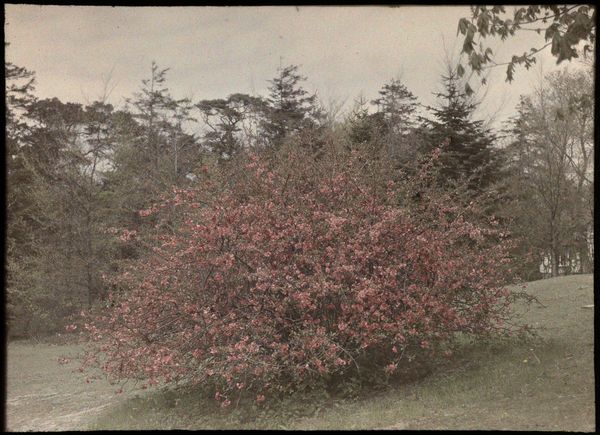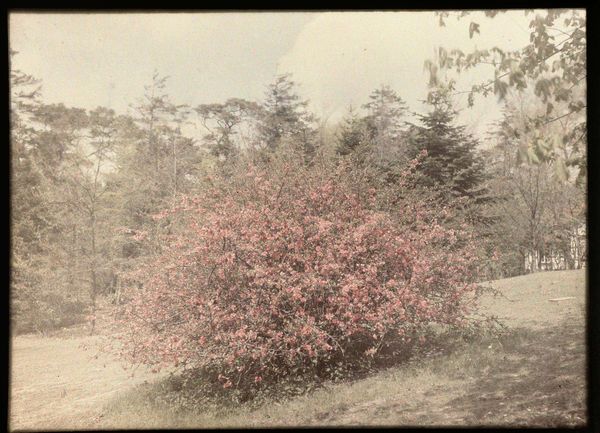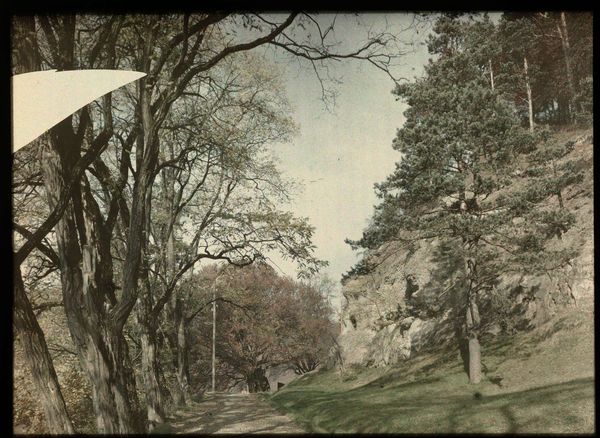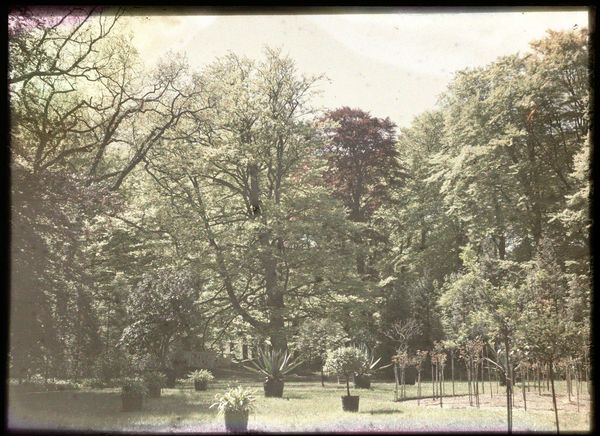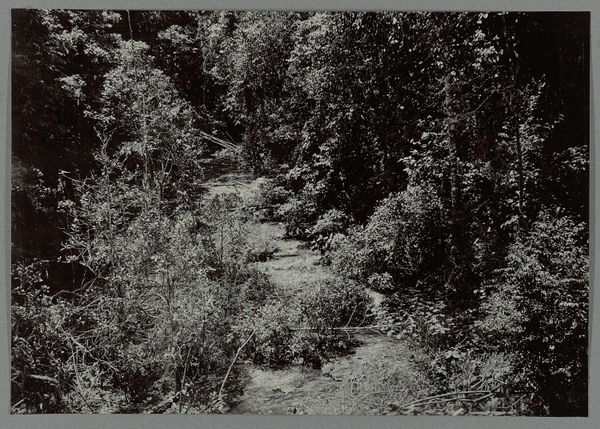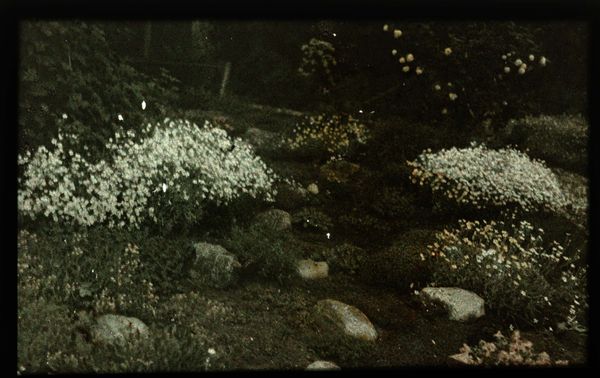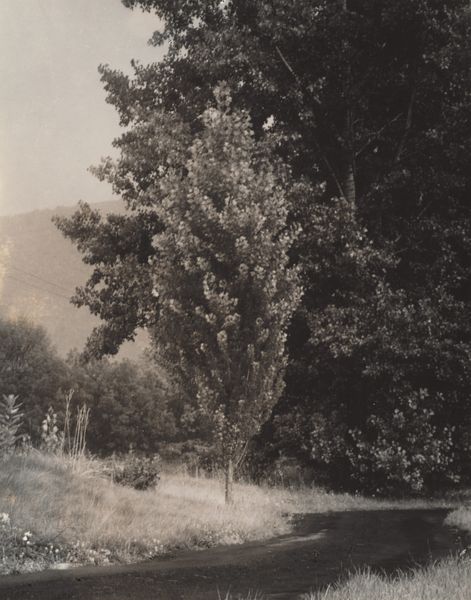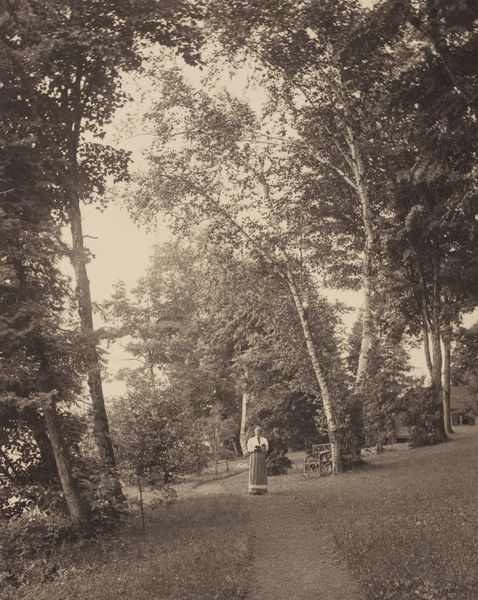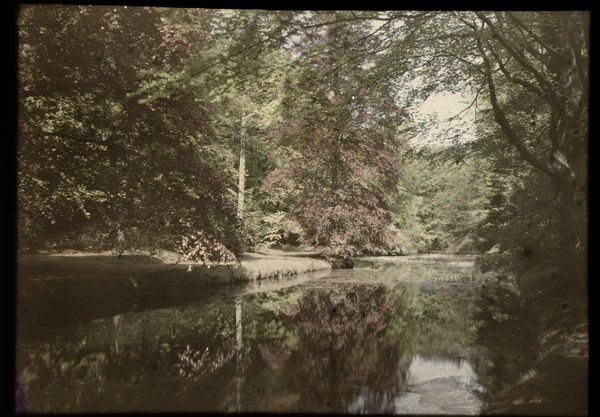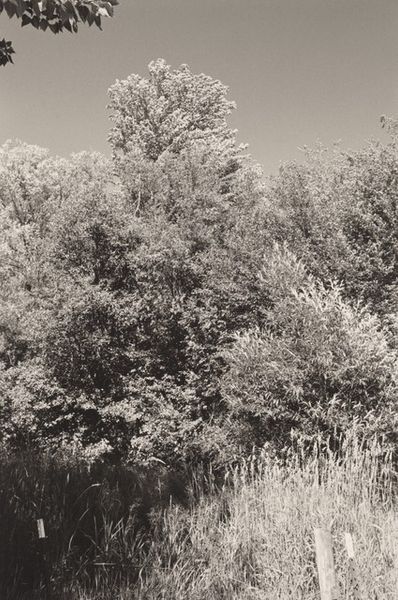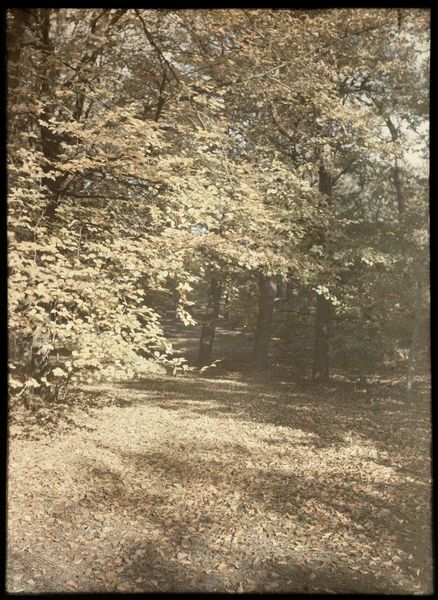
Gezicht in een park of tuin, met madeliefjes in het gras (voorgrond), een rood bloeiende struik en bomen 1907 - 1930
0:00
0:00
Dimensions: height 89 mm, width 119 mm
Copyright: Rijks Museum: Open Domain
Adolphe Burdet captured this garden scene on glass, using the photographic process known as autochrome. Autochrome was among the first commercially successful color photography methods. Developed in France, it involved coating a glass plate with microscopic grains of potato starch dyed red, green, and blue-violet, acting as filters. When exposed to light, these filters recorded color information, creating a positive color transparency. This process, though revolutionary, demanded precision and skill. Each plate was painstakingly prepared, exposed, and developed. The final image, with its soft, impressionistic hues and graininess, is as much a product of labor-intensive technique as it is of artistic vision. Consider the contrast between the meticulous autochrome process and the seemingly effortless beauty it captures. This tension embodies a shift in image production – the democratisation of color photography - a move away from the hand-painted, artisanal approach to image-making, and towards the technologies of mass production.
Comments
No comments
Be the first to comment and join the conversation on the ultimate creative platform.
